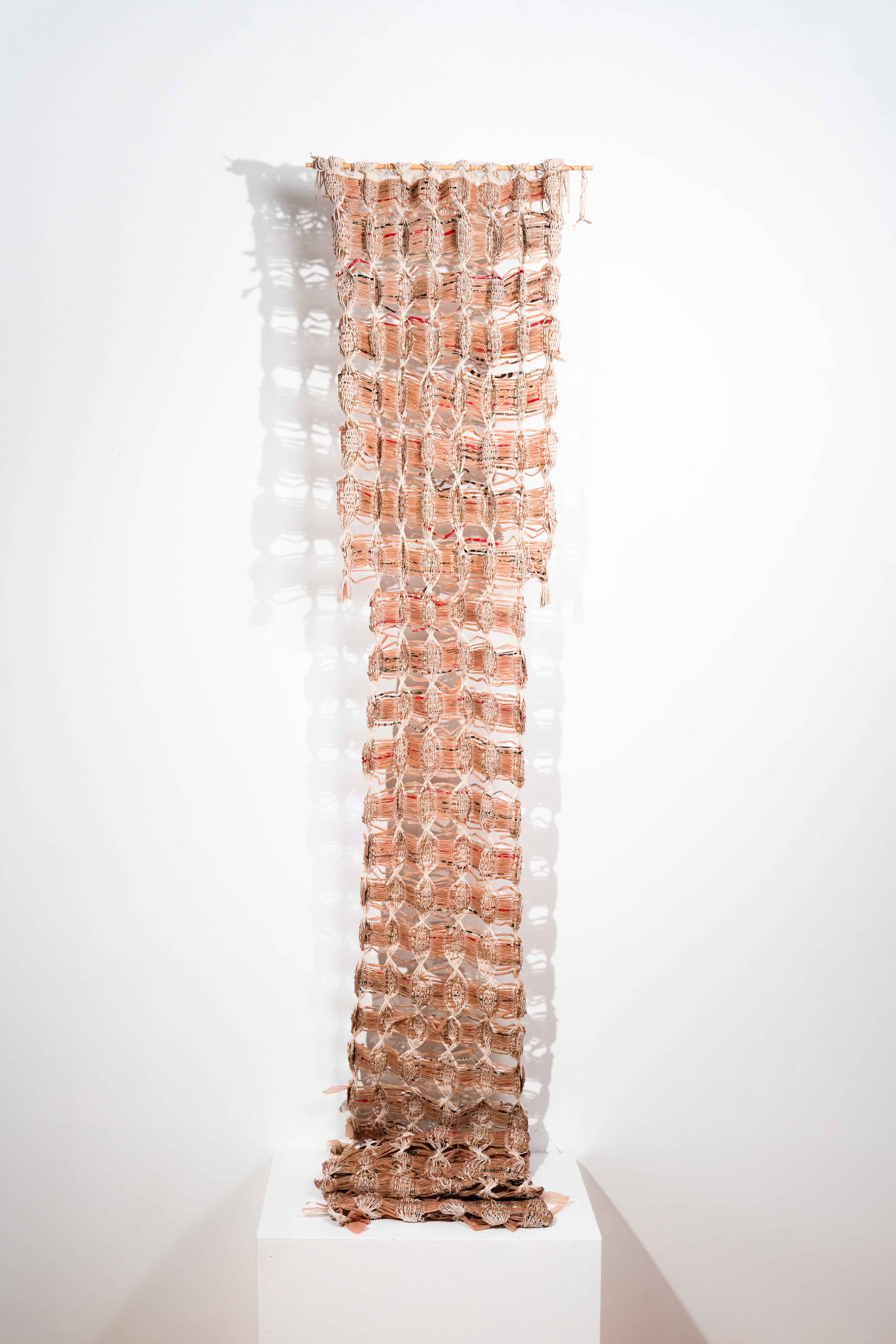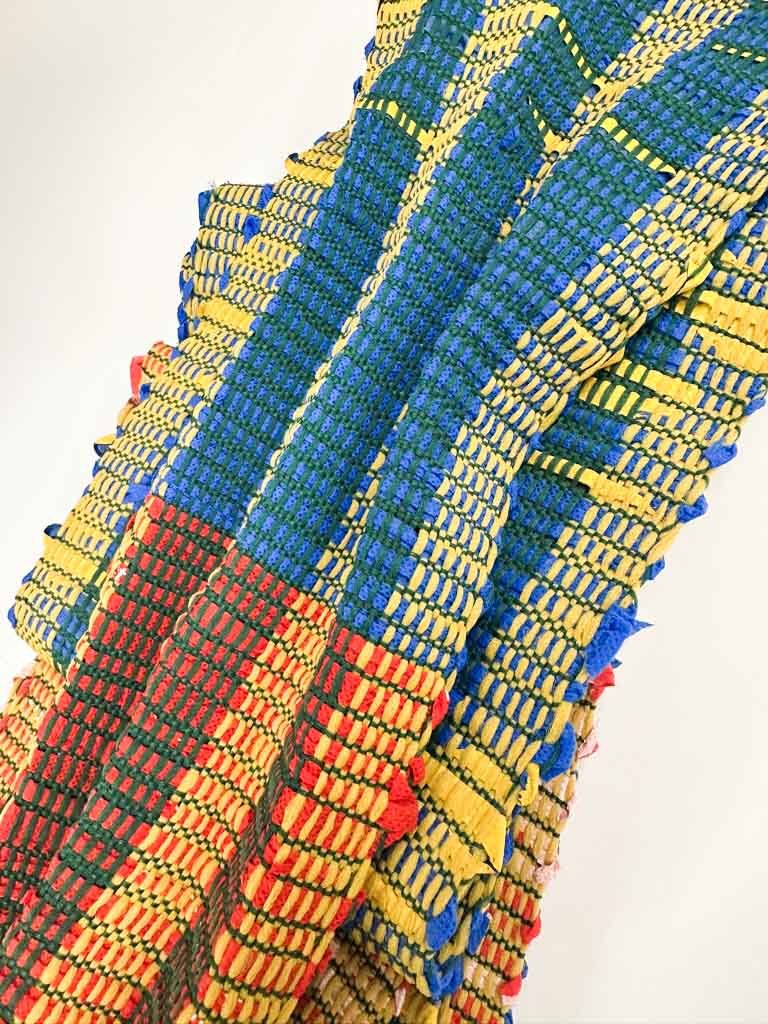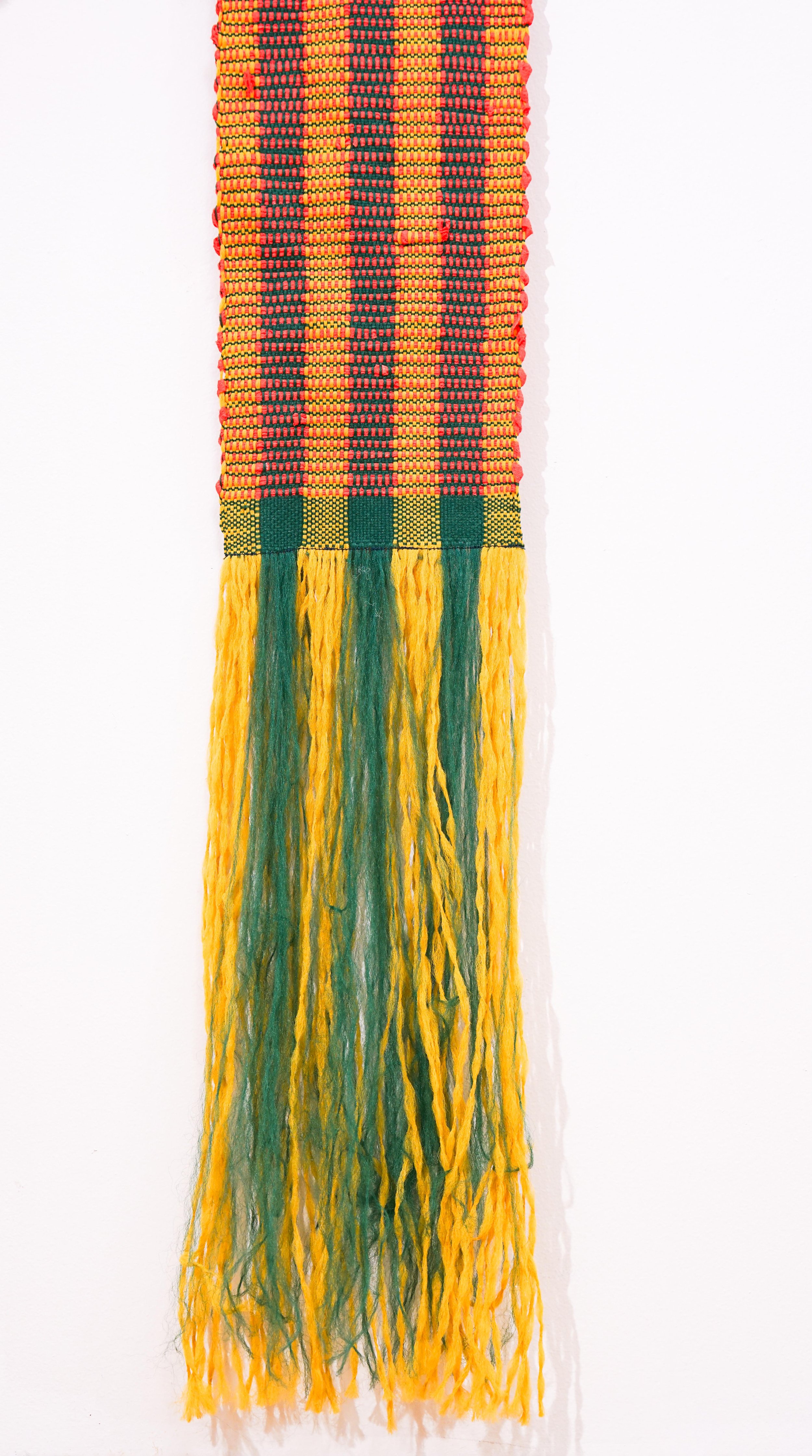Jaali and Saafaa
Textile Art : Woven Installation
Floor Loom Weaving, Sustainable, Upcycled , Re-using Single use Plastic bags into Yarns , Material Innovation, Color Contrast
Jaali
/jaa-li/
A Window to Ornate Elegance
In the majestic palaces of Rajasthan, particularly notable for their Jaali carvings, a captivating contrast unfolds. From the outside, these architectural marvels blend seamlessly into the arid landscape, adorned in sandstone and pink stone hues that mirror the surrounding terrain. Yet, upon crossing the threshold, visitors are greeted by a breathtaking spectacle of opulence and vibrancy. Within the palace walls, a symphony of colors, patterns, and motifs adorns every surface, from intricately carved marble to glistening crystals and glass. The Jaali windows, with their traditional craftsmanship and delicate filigree designs, serve as portals to this world of ornate elegance. Through these windows, one glimpses a kaleidoscope of hues, illuminated by the jewels and floral motifs that embellish the palace interiors. It is a testament to Rajasthan’s rich cultural heritage and artistic prowess, where the transition from monotonous exteriors to vibrant interiors is nothing short of enchanting. Through the transformation of discarded single use plastic bags into art, I aim to pay homage to Rajasthan’s architectural heritage while advocating for environmental consciousness and cultural preservation.
Jaali (Window), 2024 :Depiction of a traditional Rajasthani window.
H10.5 x W3 ft , Full length
Organic Cotton, Single use Plastic Bags
Woven on a Floor Loom
Jaali (Window),2024
Depiction of a window and a peep through it. Visualizing the aesthetic of a Rajasthani Palace. The monotonous outside and the colorful inside.
Inspired but these ornate windows from Rajasthani. It is the act of peeping through the window that exposes one to a kaleidoscope of colors.


Thick and thin Warp with gaps. Diamond shaped structre tied at the ends to created an organic shape and movement.
Detail shot of the second piece, visible through the gaps depicting the act of peeping through a window.
Depiction of a Traditional Window and the Interior of a house in Rajasthan.The two pieces cobine togther as a Widow and peeping through the window. Both pieces are individual and interactive.
Saafaa
/saa-faa/
The Rajasthani turban, also known as a “Saafa” holds profound cultural significance within the Rajasthani community and serves as more than just a piece of clothing. Traditionally, the saafa is a symbol of honor, dignity, and pride among Rajasthani men. Its intricate tying process, often requiring several yards of fabric, reflects skill, expertise, and social status. The saafa’s vibrant colors and patterns are not only aesthetically pleasing but also carry symbolic meanings, with different colors representing various aspects of Rajasthani culture, such as bravery, royalty, and spirituality. Moreover, the saafa plays a crucial role in identity and belonging, serving as a marker of regional affiliation and cultural heritage.
By creating a long cloth inspired by the Rajasthani saafa using regenerated Econyl nylon and waste shopping bags from popular retailers like Target and Walmart, I am not only paying homage to this cherished cultural tradition but also making a statement about sustainability and environmental consciousness. The use of regenerated nylon and recycled materials highlights the importance of repurposing and reducing waste in today’s consumer-driven society while also celebrating the rich cultural heritage of Rajasthan. Through the colorful explosion of fabric, I am not only creating a wearable piece of art but also sparking conversations about the intersection of culture, tradition, and sustainability in a rapidly changing world.






In today’s world, the relentless pursuit of consumer goods has led to unprecedented levels of waste and environmental degradation. As a textile artist navigating the intersection of culture and consumerism, I embarked on a journey to challenge the status quo and redefine the boundaries of my craft. Inspired by the urgency of addressing the environmental impact of consumer culture, I made a conscious decision to utilize and repurpose single-use plastic as the primary medium for my textile art. This decision was born out of a deep-seated belief in the power of art to spark meaningful conversations and drive positive change. By transforming discarded plastic into intricate and visually striking artworks, I sought to shed light on the environmental consequences of consumerism while offering a creative and thought-provoking response to the pressing issues of our time. Through this thesis capstone project, I invite you to delve into the story behind my artistic journey, exploring the motivations, challenges, and insights that have shaped my exploration of plastic as a medium for cultural commentary and artistic expression.












